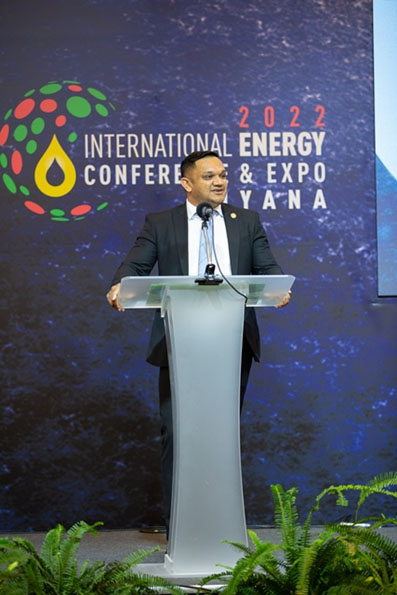As Guyana continues to build its bona fides as one of the world’s leading oil producers, the government is seeking to increase the numbers of skilled workers employed in the sector. While for reasons that have to do with its newness to a sector which, at its apex, demands significant numbers of employees possessed of highly specialized skills, Guyanese workers are employed, predominantly, closer to the bottom of the ‘food chain’. The country’s Natural Resources Minister, Vickram Bharrat, was quoted in the media recently as saying that one of the government’s ambitions is to turn that situation around.
In a sector that demands a high proportion of specialist skills to execute critical assignments associated with oil recovery, among others, Guyana has benefitted from little ‘lead’ time between the country’s first publicly confirmed oil find ‘strike’ in 2015 and the commencement of the various operational pursuits associated with oil recovery. Accordingly, like other developing countries, Guyana has had to be content with the recruitment of skills from abroad to support the ‘hi-tech,’ skills-based oil recovery exercise. More than five years after the disclosure of the country’s first confirmed oil find, the country continues to rely overwhelmingly on skills imported from abroad in order to meet some of the specialized manpower needs associated with aspects of the ‘recovery’ end of the process.
A recent public comment on the issue of increasing the numbers of Guyanese trained in some of the more ‘high end’ jobs in the overall oil recovery operations, Bharrat was quoted as saying that upping the numbers of skilled workers in the oil and gas sector was desirable. A release on the issue asserted that the Government of Guyana remains unsatisfied with the existing ratio of foreign workers to locals serving the sector and that it was desirable that the ‘numbers’ be adjusted. Official estimates put at around 6,000 the number of Guyanese serving the sector which, while representing around 70% of the total work force remained well below the desirable ratio of skilled workers to unskilled ones working in the sector.
Out of the 6,000 workers currently employed in the sector, more than 900 reportedly have jobs as Plant and Machine Operators, 1,203 as “professionals” providing services as Lawyers, Accountants and Engineers while a further 483 are employed as Technicians. Jobs in the sector that are linked directly to the actual oil recovery process are executed, overwhelmingly, by expatriates.
The advent of an oil and gas sector in Guyana has opened up new streams of ambitions associated with the hopes of securing training in the various sectors of oil and gas operations and ultimately securing jobs in the sector that usually attract salary levels way beyond what other sectors offer. The emergence of an oil and gas sector has also given rise to training courses at some local institutions to equip Guyanese with jobs mostly on the lower rungs of the sectorial ladder. Back in December 2021, President Irfaan Ali had disclosed that the Port Mourant Training Centre would be transformed into the country’s National Oil and Gas Institute. The initiative was executed with the support of ExxonMobil Guyana Limited (EMGL), Hess and CNOOC.
Setting aside the surge of interest among Guyanese in the acquisition of skills that enhance the likelihood of securing jobs in the oil and gas sector through courses at local institutions like the University of Guyana and the Government Technical Institute, some local secondary school students have also been expressing an interest in specialized courses at overseas institutions which they believe might position them for employment in the sector.






